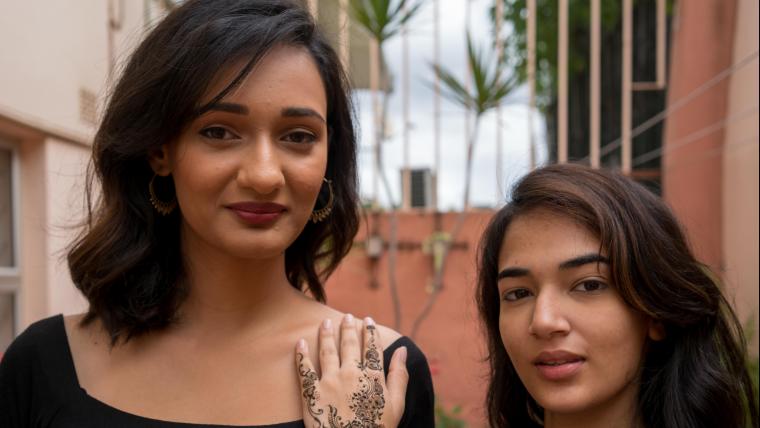
The Muslim feminist drawing her story in henna
Husnaa Kajee’s hands move swiftly, but precisely, as she applies henna to the palm of a hand. With each squeeze of the paste-filled cone, she forms intricate swirls and patterns on the skin. Within a few days the design will deepen from a bright orange to a dark red, aided by the body’s natural warmth. Mehndi is rooted in Kajee’s heritage, and is how she expresses who she is. But it’s not the only way. A proud feminist, Kajee is using both her work as a henna artist and a writer to interrogate the complexities of identity.
“People think you have to choose between culture, tradition, and being a feminist,” Kajee says. “There aren’t enough spaces that represent modern Muslim women.” The henna artist works predominantly in the wedding industry. By bringing aspects of tradition to modern brides, Kajee is inspiring a renewed appreciation of her culture. When she’s not writing her heritage in henna, she’s sharing her experiences by blogging. She collaborates with other writers of South Asian heritage to create content that others like them can identify with. “Because of the underrepresentation in the media, many brown girls struggle to find their place in the world,” Kajee says. “The Brown Girl Society is an online platform to create and share content that underrepresented people can relate to.”
Kajee’s art and writing navigates her feminist beliefs while still honouring her culture and religion. In doing so, she’s affirming her own identity, and rejecting the stereotypes perpetuated by the media. “To me, feminism doesn't mean that women have to step away from traditional feminine gender roles,” she says. “But if they wanted to, the choice is there.” The stories of brown girls like Kajee are as intricate and complex as the lines in mehndi. It’s time we told them.






























Please sign in to leave a comment